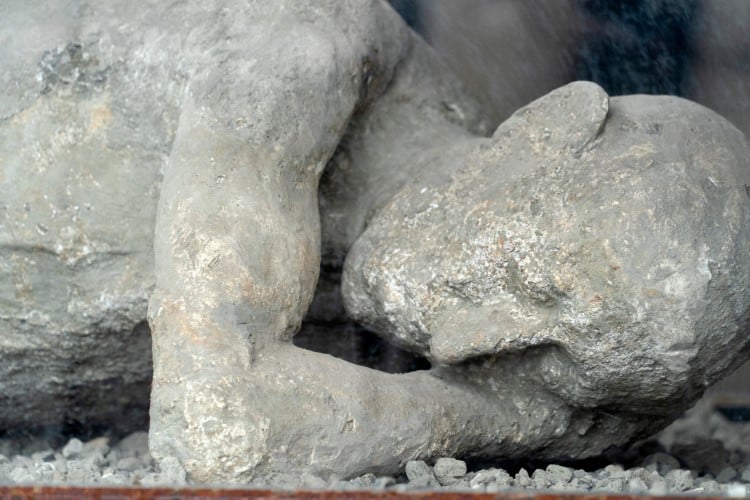Archeologists filled with plaster the cavities of those buried in ash in the eruption of vesuvius 79 a d what was revealed was a full and detailed plaster cast of the body of a citizen of pompeii at the moment of death

Archeologists Unearth the Tragic Fate of Pompeii Citizens with Detailed Plaster Casts

When Mount Vesuvius erupted in 79 A.D., the ancient Roman city of Pompeii was blanketed in thick layers of ash. The cataclysmic event, while devastating for the inhabitants, provided archeologists with a unique opportunity to witness the last moments of those caught in the eruption. By meticulously filling the ash cavities with plaster, the bodies of Pompeii citizens were forever preserved, offering a haunting glimpse into their final moments.
The technique of creating plaster casts from the human remains found in Pompeii has proven to be an invaluable source of information for historians and archeologists alike. These casts provide an eerie and yet vivid snapshot of the individuals who met an untimely end during the eruption. The level of detail captured in these casts is truly remarkable and has greatly contributed to our understanding of life in ancient Pompeii.

One of the most famous casts is that of an unfortunate citizen who, until recently, remained a nameless victim of the disaster. Thanks to the explicit details captured by the plaster cast, we now know much about this individual. The cast reveals a man with a disheveled appearance, contorted in agony as he struggled for his last breath. The remarkable preservation of even the most delicate features, such as his facial expression and the wrinkles of his garments, adds a chilling sense of realism to the cast.
With the help of modern technology, researchers have been able to gain further insights into the lives of the Pompeii citizens. Scanning techniques and computer modeling have allowed virtual reconstructions of the victims’ skeletons, providing us with valuable information about their age, health conditions, and even the diets they consumed. This interdisciplinary approach has revolutionized our understanding of ancient societies and their daily lives.
It is important to note that while these plaster casts provide invaluable historical and archeological data, they also remind us of the human tragedy that unfolded during the eruption. Behind each cast is a story of an individual whose life was abruptly cut short, their hopes and dreams forever frozen in time. The haunting images serve as a poignant reminder of the fragility of human existence and the power of natural disasters.
In conclusion, the plaster casts created from the ash-cloaked bodies in Pompeii offer a unique and chilling glimpse into the last moments of the city’s inhabitants. These detailed and lifelike casts have significantly contributed to our understanding of ancient Pompeii and its people. From reconstructing their appearances to delving into their health conditions, these casts have shed light on the lives and deaths of those who met their fate in the devastating eruption of Mount Vesuvius. For more information and visuals, you can refer to the History and Archaeology Online website.
Related Posts
Quick Links
Legal Stuff

